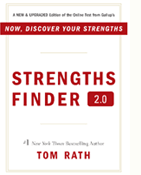Blogging the AMA Leadership Summit
The American Marketing Association is hosting their Leadership Summit in Chicago this weekend (April 25-27). It is for leaders in local chapters of the AMA to learn how to better serve their members and run a better chapter. It is also a great gathering of marketing professionals from across the nation. I am anticipating some great networking and learning opportunities.
As I learn along with members of the Wichita Chapter making the trip, I plan to blog about the goingson.
This gives me an opportunity to talk about the importance of joining professional organizations in your field, marketing or otherwise. There are so many in the marketing field (PRSA, AdFed, etc.) that are great opportunities to meet others and share best proactices. Leraning never stops and professional development should be high on your list of goals for furthing your career.
If you are going to the conference and would like to connect, drop me a line.







